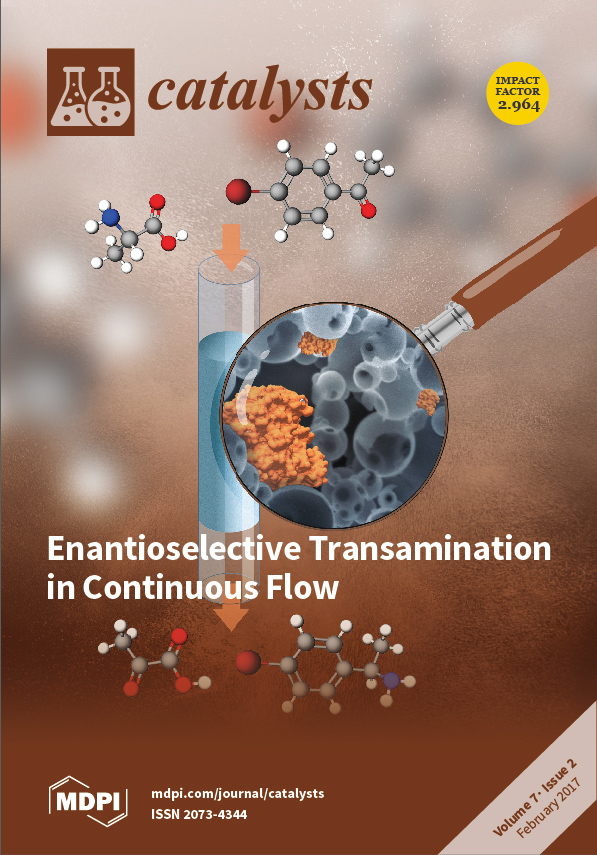The present work describes the effects of water on Fe-doped nanoparticulate CeO
2, produced by flame spray pyrolysis, which is a critical environmental issue because CeO
2 is not stable in typical atmospheric conditions. It is hygroscopic and absorbs ~29 wt %
[...] Read more.
The present work describes the effects of water on Fe-doped nanoparticulate CeO
2, produced by flame spray pyrolysis, which is a critical environmental issue because CeO
2 is not stable in typical atmospheric conditions. It is hygroscopic and absorbs ~29 wt % water in the bulk when exposed to water vapor but, more importantly, it forms a hydrated and passivating surface layer when immersed in liquid water. In the latter case, CeO
2 initially undergoes direct and/or reductive dissolution, followed by the establishment of a passivating layer calculated to consist of ~69 mol % solid CeO
2·2H
2O and ~30 mol % gelled Ce(OH)
4. Under static flow conditions, a saturated boundary layer also forms but, under turbulent flow conditions, this is removed. While the passivating hydrated surface layer, which is coherent probably owing to the continuous Ce(OH)
4 gel, would be expected to eliminate the photoactivity, this does not occur. This apparent anomaly is explained by the calculation of (a) the thermodynamic stability diagrams for Ce and Fe; (b) the speciation diagrams for the Ce
4+-H
2O, Ce
3+-H
2O, Fe
3+-H
2O, and Fe
2+-H
2O systems; and (c) the Pourbaix diagrams for the Ce-H
2O and Fe-H
2O systems. Furthermore, consideration of the probable effects of the localized chemical and redox equilibria owing to the establishment of a very low pH (<0) at the liquid-solid interface also is important to the interpretation of the phenomena. These factors highlight the critical importance of the establishment of the passivating surface layer and its role in photocatalysis. A model for the mechanism of photocatalysis by the CeO
2 component of the hydrated phase CeO
2·2H
2O is proposed, explaining the observation of the retention of photocatalysis following the apparent alteration of the surface of CeO
2 upon hydration. The model involves the generation of charge carriers at the outer surface of the hydrated surface layer, followed by the formation of radicals, which decompose organic species that have diffused through the boundary layer, if present.
Full article





